Yes, you read the recipe name right. Today I am going to share delicious dosa made with idli rava! Check out how to make this no-ferment idli rava dosa recipe with detailed step-wise pictures.
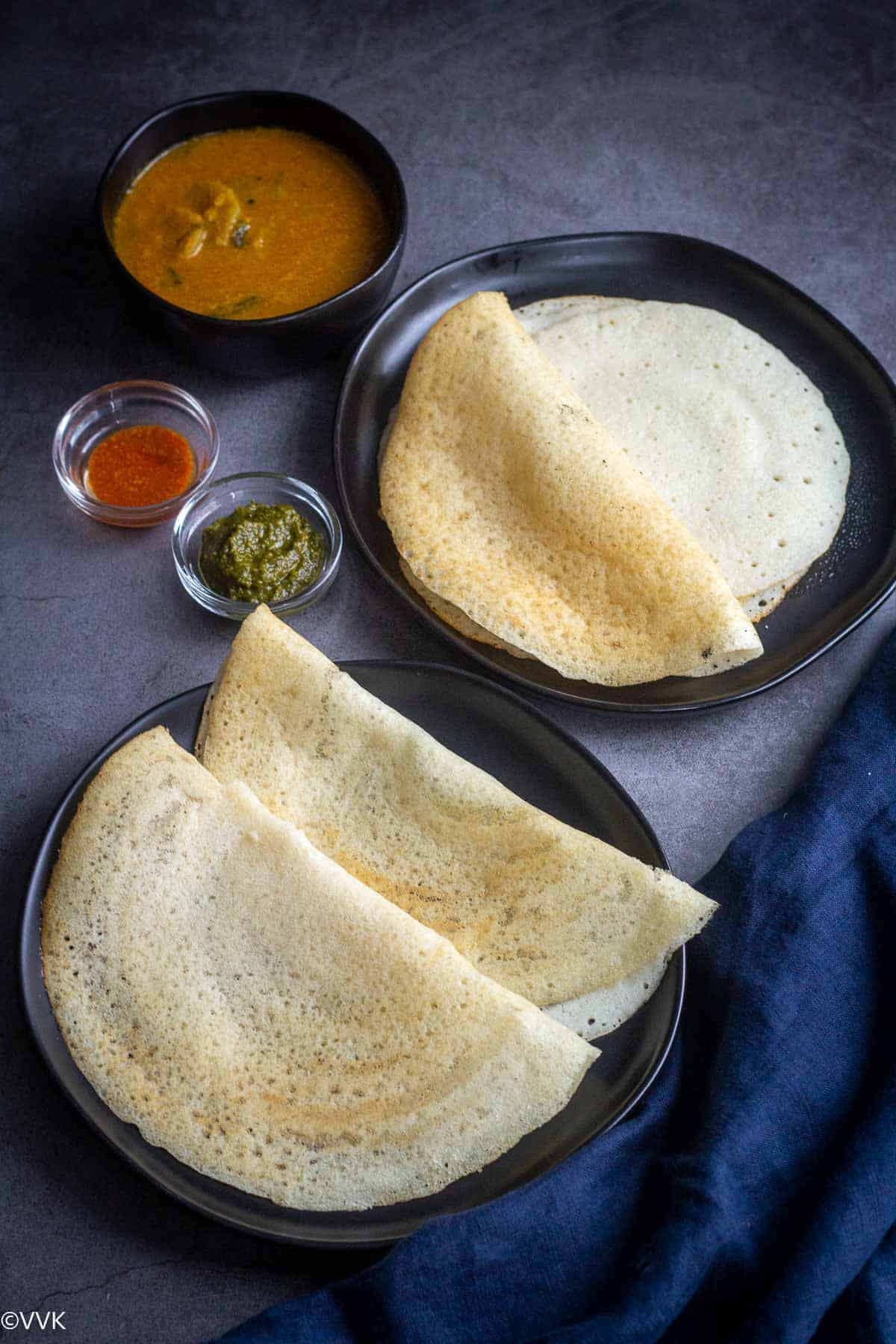
Why only idli with idli rava? Why not dosai? I have been trying different recipes with idli rava, and this exclusive dosa with idli rava is among them.
This dosai is not an instant one, but there isn’t too much soaking time involved, and this is no-fermentation dosa, so even if you soak the dal and rice rava by 4 PM, you can very well make it by 7 PM for dinner.
Jump to:
What is idli rava?
Idli rava is nothing but the cream of rice or rice semolina, of course gluten-free. It’s is also known as rice rava. The boiled or parboiled rice is dried and ground into a semolina-like texture.
In my native, we use arisi kurunai / cracked rice to make idli and dosa. Kurunai is not as refined as rice rava. I started using idli rava only after coming to the US, and more than using it for making idli, I make kheer, upma kozhukattai, and many other recipes. Sadly, I haven’t shared any here. I will start sharing them soon.
Ingredients required
Idli rava – I have used store-bought fine idli rava, but you can use coarse variety too. With fine rice rava variety, be careful when rinsing and draining the rava.
Urad dal – For one cup of idli rava, I used only 2 tbsps of urad dal. The whole urad dal works best.
Poha / flattened rice – For one cup of idli rava, I used 2 tbsps of poha. It’s an optional ingredient, and I have tried this dosa without poha too.
Fenugreek seeds – I love the flavor of fenugreek seeds in idli and dosa, and I always add a little extra. You can reduce the amount as per your preference.
Yogurt: To incorporate the sour taste and the goodness of probiotics, I added yogurt. I have used coconut yogurt here, but you can use dairy-based too.
Apart from these ingredients, we need water, oil, and salt. Please check the recipe card for detailed measures.
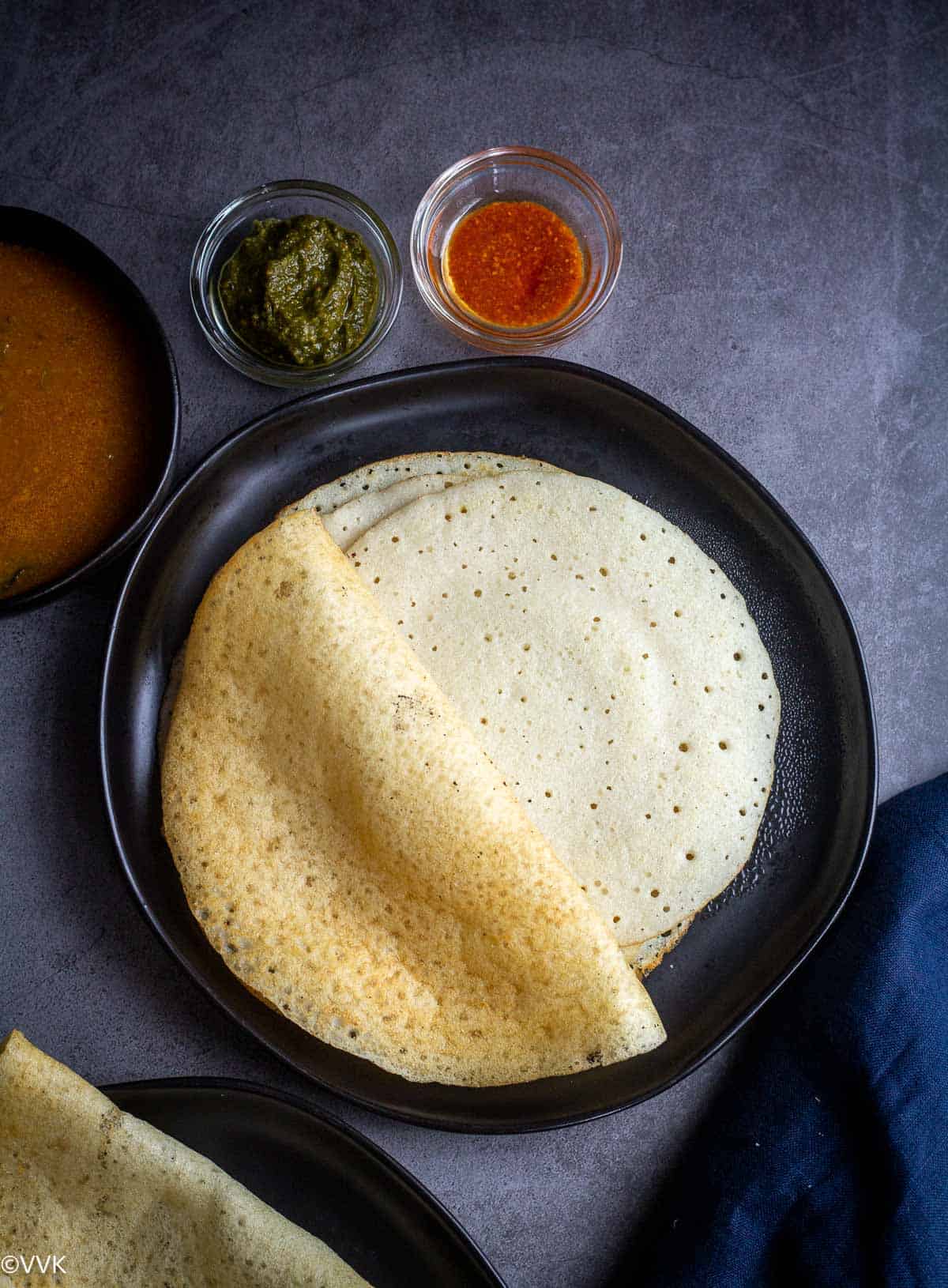
Frequently asked questions
No, it doesn’t. It blends well and adds a nice flavor.
I have only used cashew and coconut yogurt, and both should be fine. I haven’t used other plant-based yogurt, so I can’t talk much about other yogurts. If you are not particular about the vegan diet, you can opt for dairy-based yogurt.
With this dosa batter, you can make soft dosa and crispy dosa. I will share the video soon.
Yes, you can. In that case, skip the yogurt and let it ferment for 8 to 10 hours. Be cautious while adding water to the batter before fermentation. The watery batter doesn’t rise much.
Tips for making perfect dosa
I often hear from my readers that dosa sticks to the pan or does not come as crispy. Here are some things that I follow,
- If you are using a cast-iron pan, make sure it is well seasoned.
- If the pan is too hot, the batter sticks to the pan. Once the pan becomes hot, I reduce the heat to medium to medium-low and make the dosa. Do not prepare dosa in high heat.
- Rubbing the pan with a cucumber slice or onion slice prevents dosa from sticking to the pan.
- Make sure the batter is in the right consistency.
- The temperature of the batter – I have made dosa with cold batter and room temperature batter. I have never faced any issues.
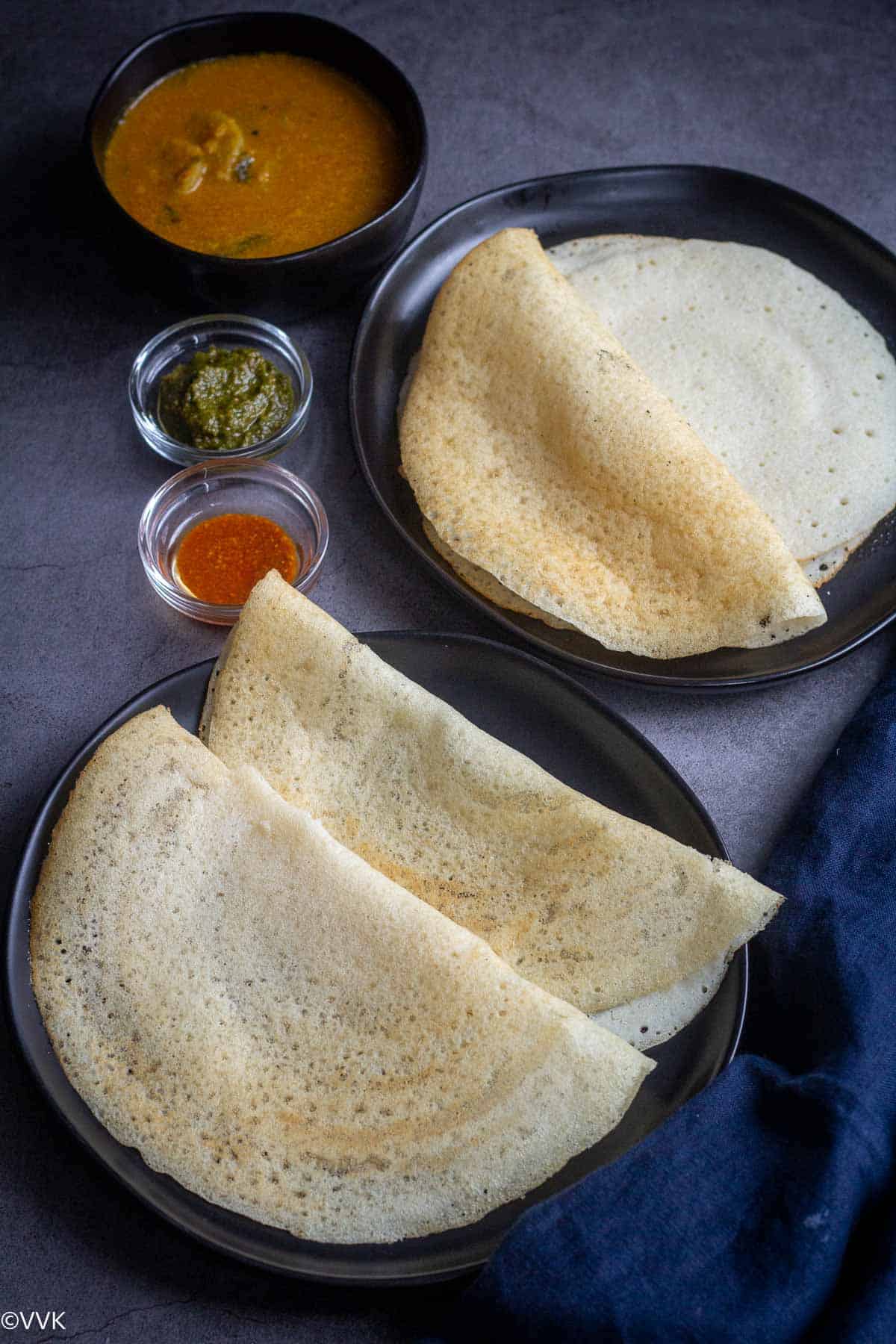
Dietary specifications and serving suggestions
This idli rava dosa is naturally vegan and gluten-free. Make sure to use vegan yogurt for a vegan version.
You can serve this dosa with chutneys of your choice or sambar or kurma or with idli podi too. Check out my different sides for idli and dosa.
How to make idli rava/rice rava dosa
Soaking and preparing the batter
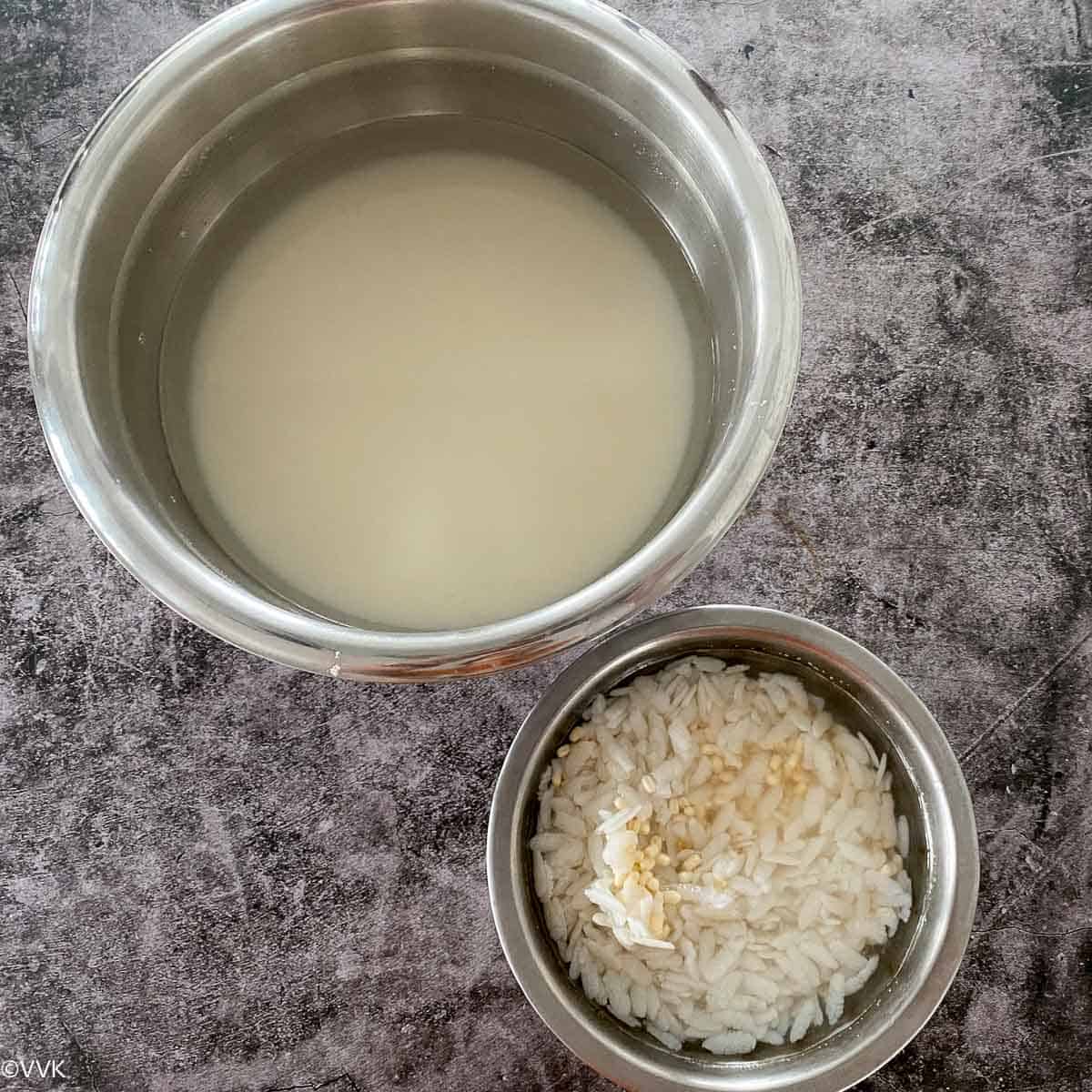
- Rinse the rice rava, urad dal, and poha. Soak the urad dal, poha, and fenugreek seeds together in one bowl and rice rava separately in another for 3 to 4 hours.
- After 4 hours, drain the water from the urad dal/poha mixture and grind it into a smooth batter. I used my Indian mixer jar to prepare the batter and used 6 tbsps of water while grinding the urad dal.
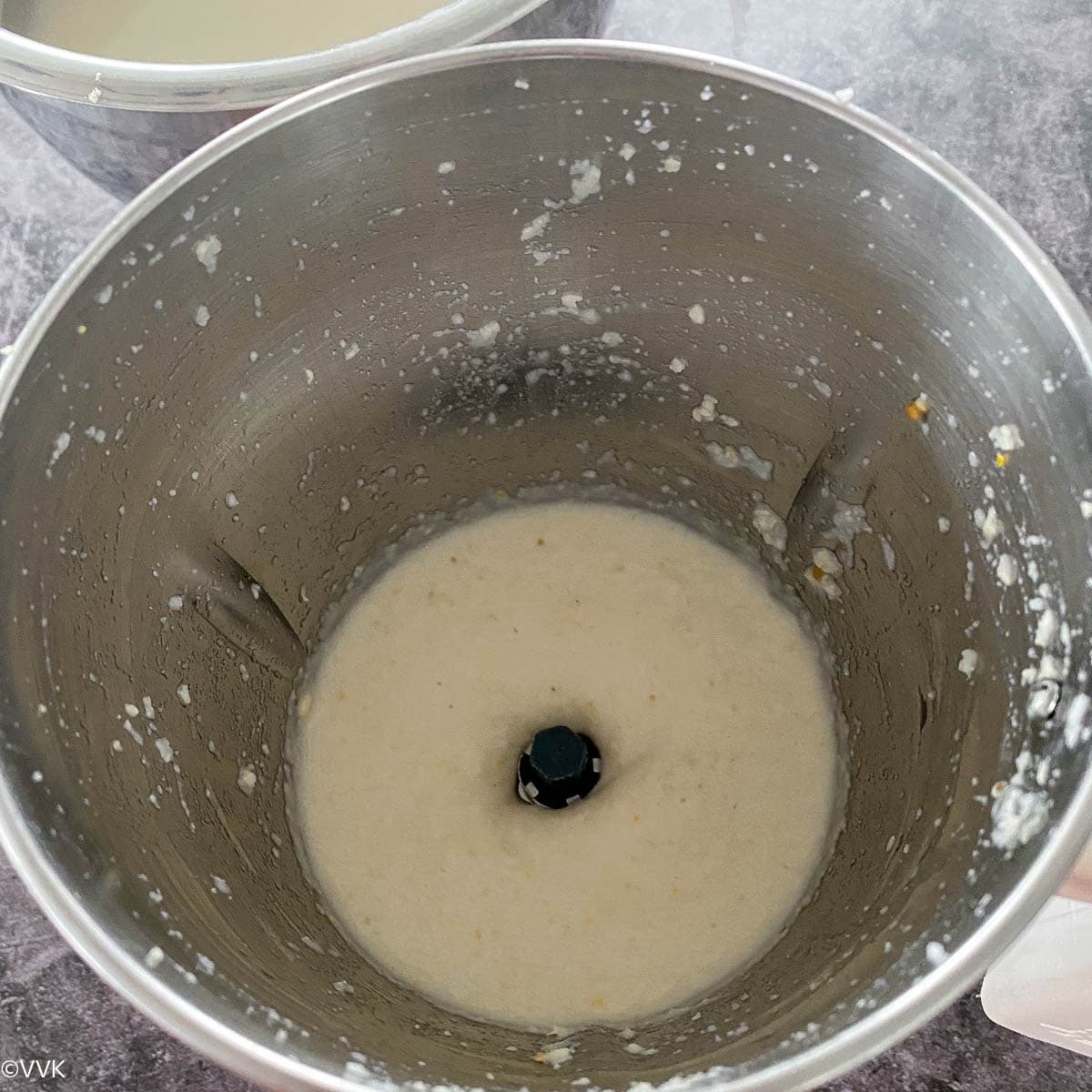
- Take a fistful of idli rava, squeeze the water as much as you can like below.
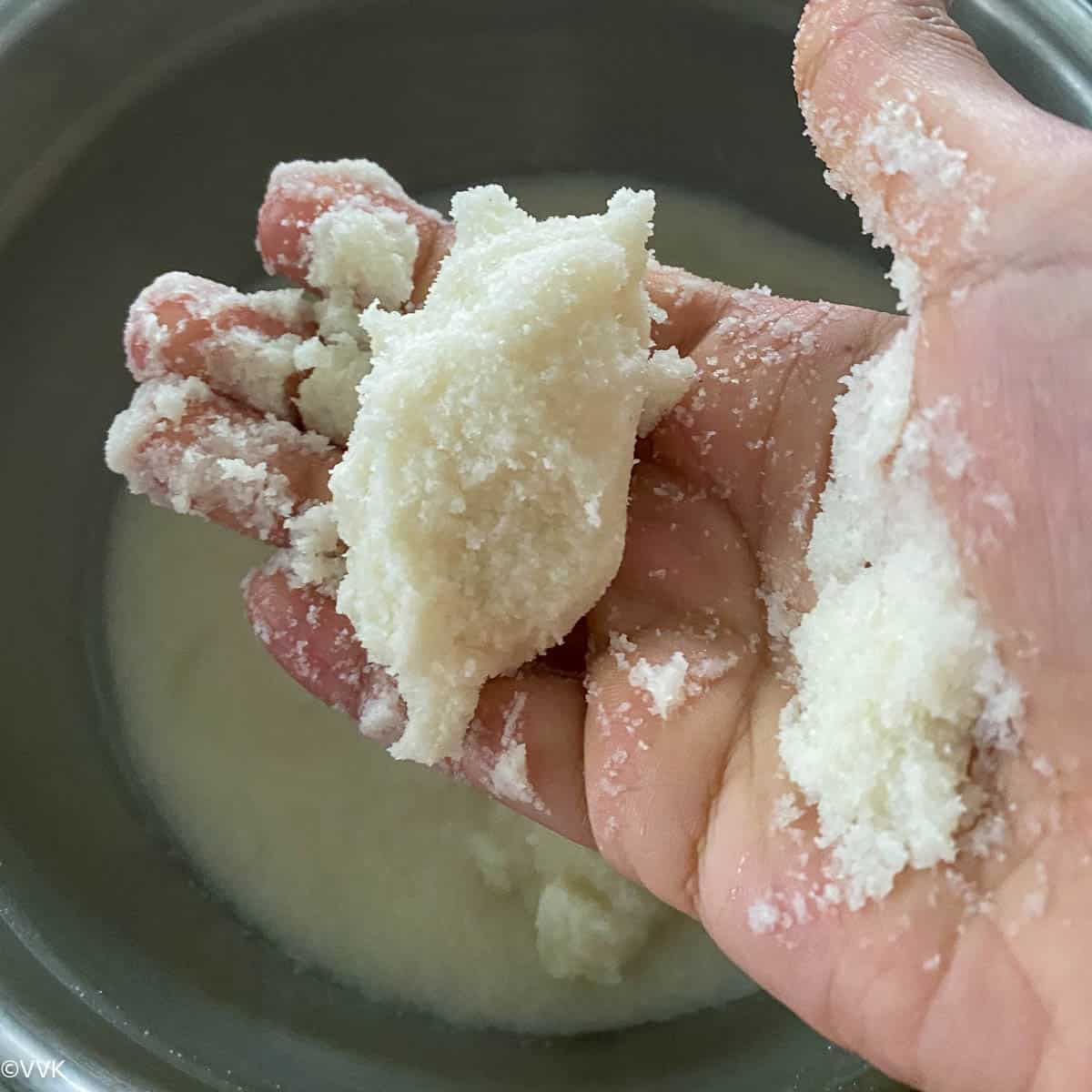
- Add it to the urad dal mixture. Work in batches and add the squeezed rice rava to the mixer jar. Add the coconut yogurt.
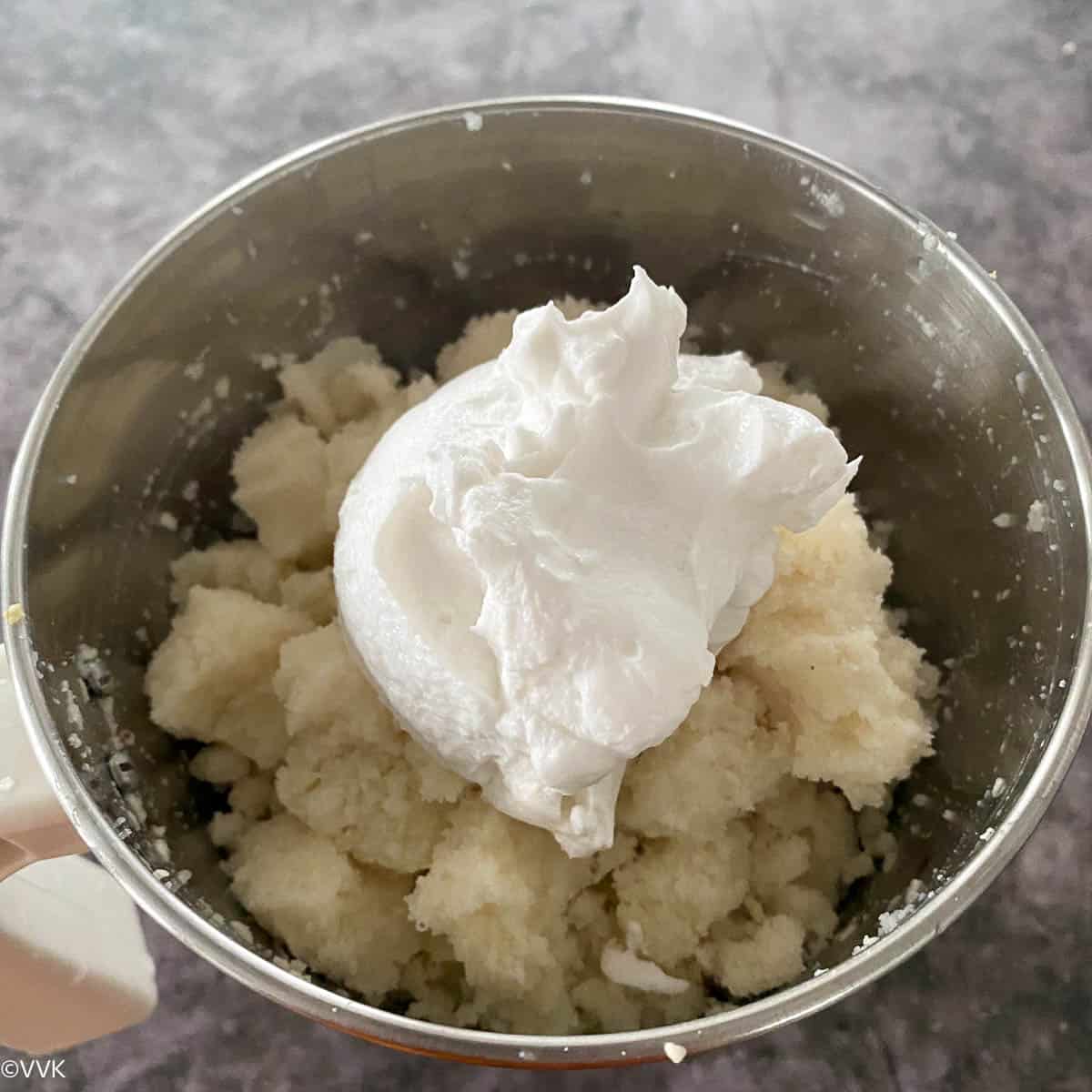
- Grind them all together. I used about ½ cup of water during this process. Note – I used my tall jar, and I could grind in one go. Depending upon the size of your blender/mixer jar, work in batches.
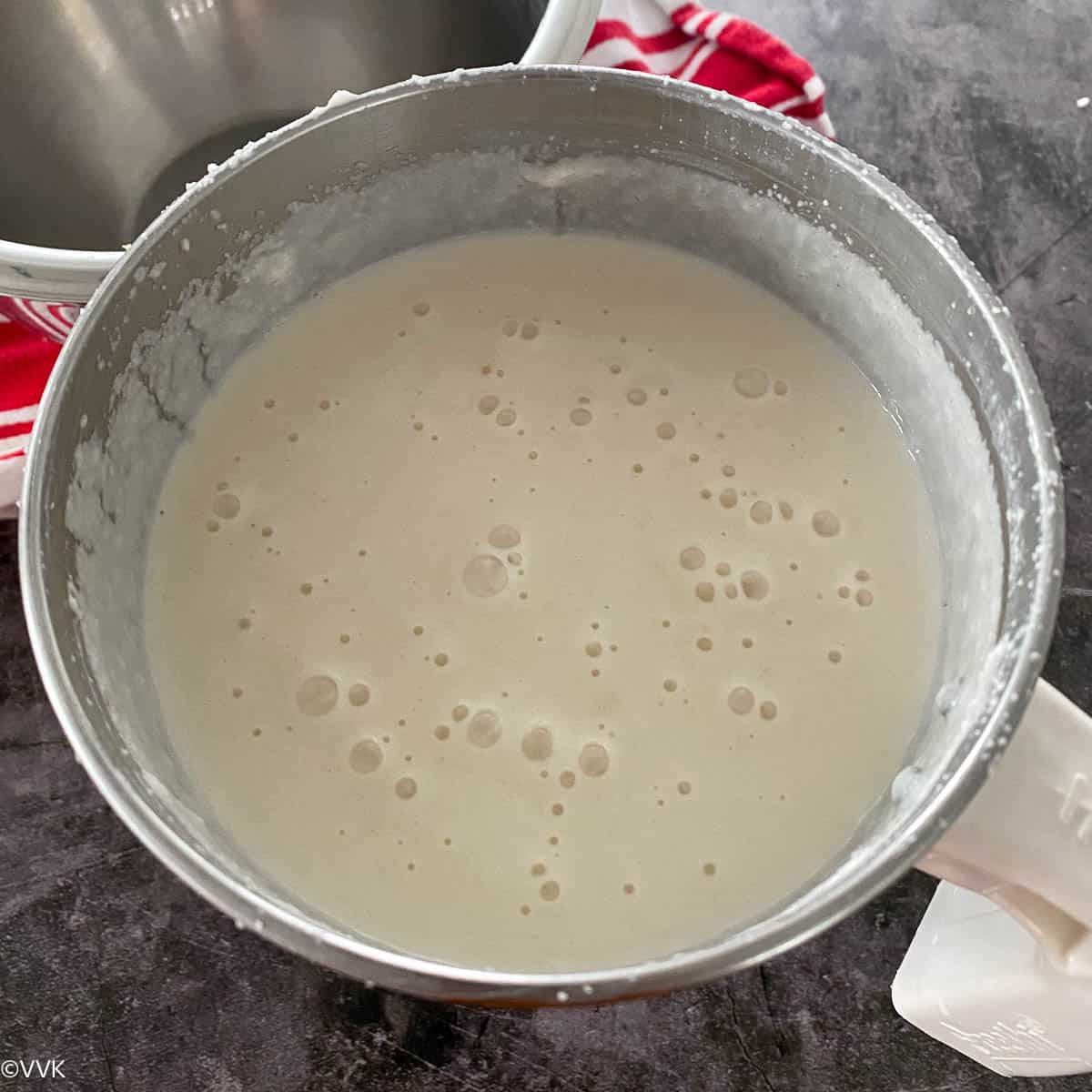
- Transfer the batter to a bowl and add salt. Mix well and let it sit for 20 to 30 minutes.
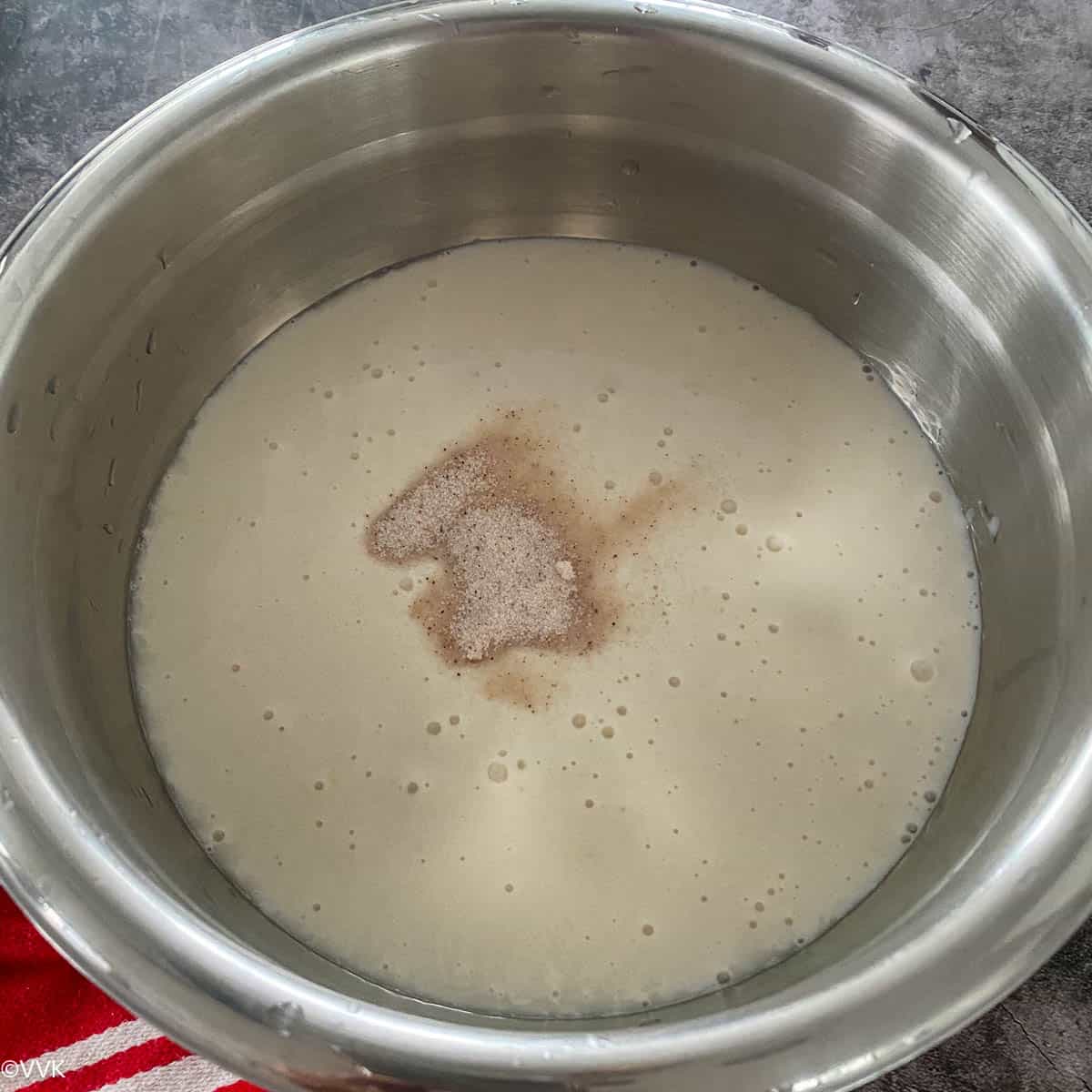
Make the dosai
- Heat a well seasoned cast-iron pan, and when it is hot, reduce the heat to medium-low. Take a ladle full of batter, pour it on the pan, and spread it gently.
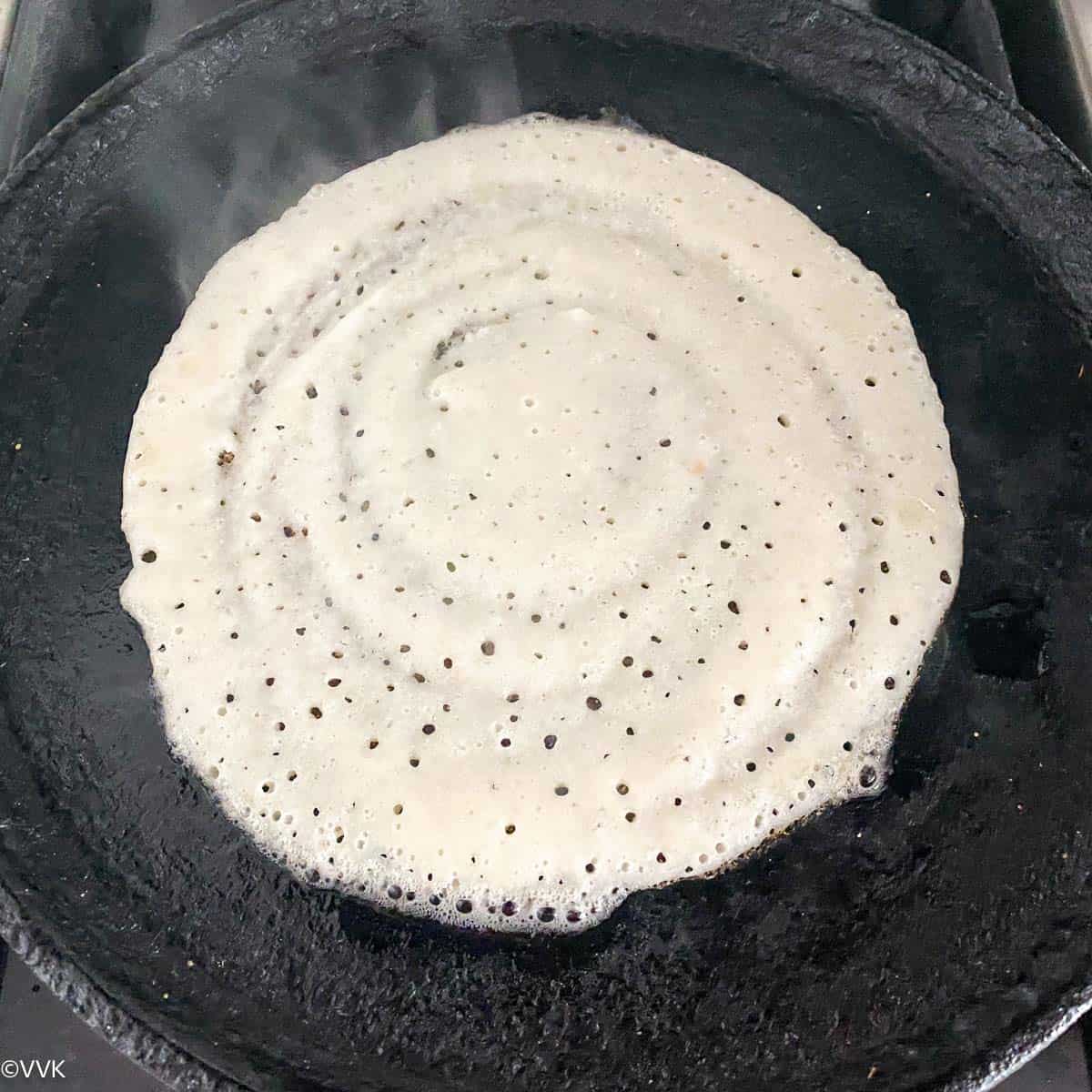
- For a crispy version, spread it evenly and thin. But gently spread it thin. You won’t get a paper roast kind crispy dosa. If there are gaps, fill it with batter. For a soft version, add the batter and let it spread. You can cover and cook like aval dosa.
- Spread some oil around the edges let the dosa cook. When the top side is fully cooked, loosen the edges, flip the dosa, and cook for 30 to 45 seconds. Now flip the dosa back and remove it from the pan.
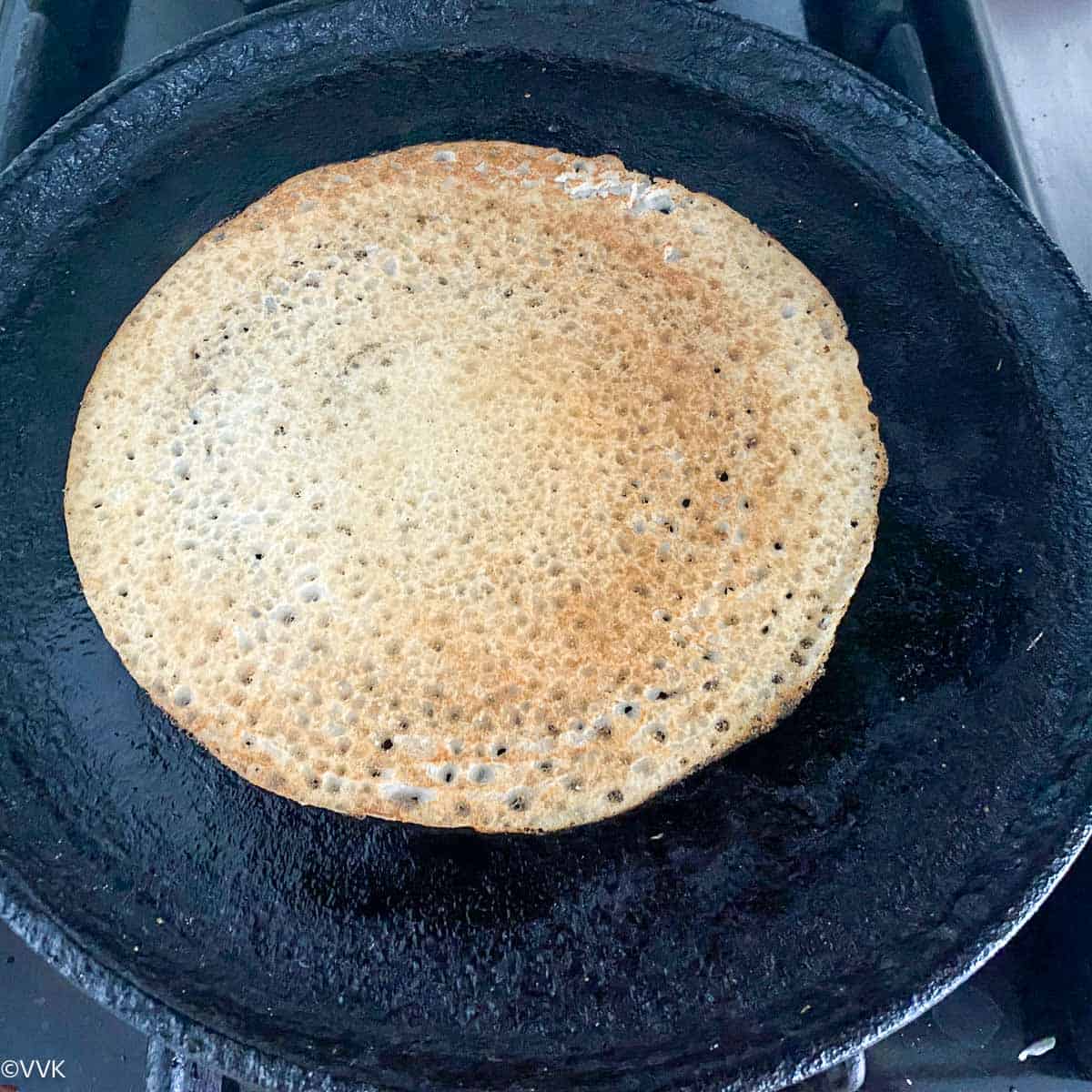
- Similarly, make the dosa with the remaining batter and serve hot.
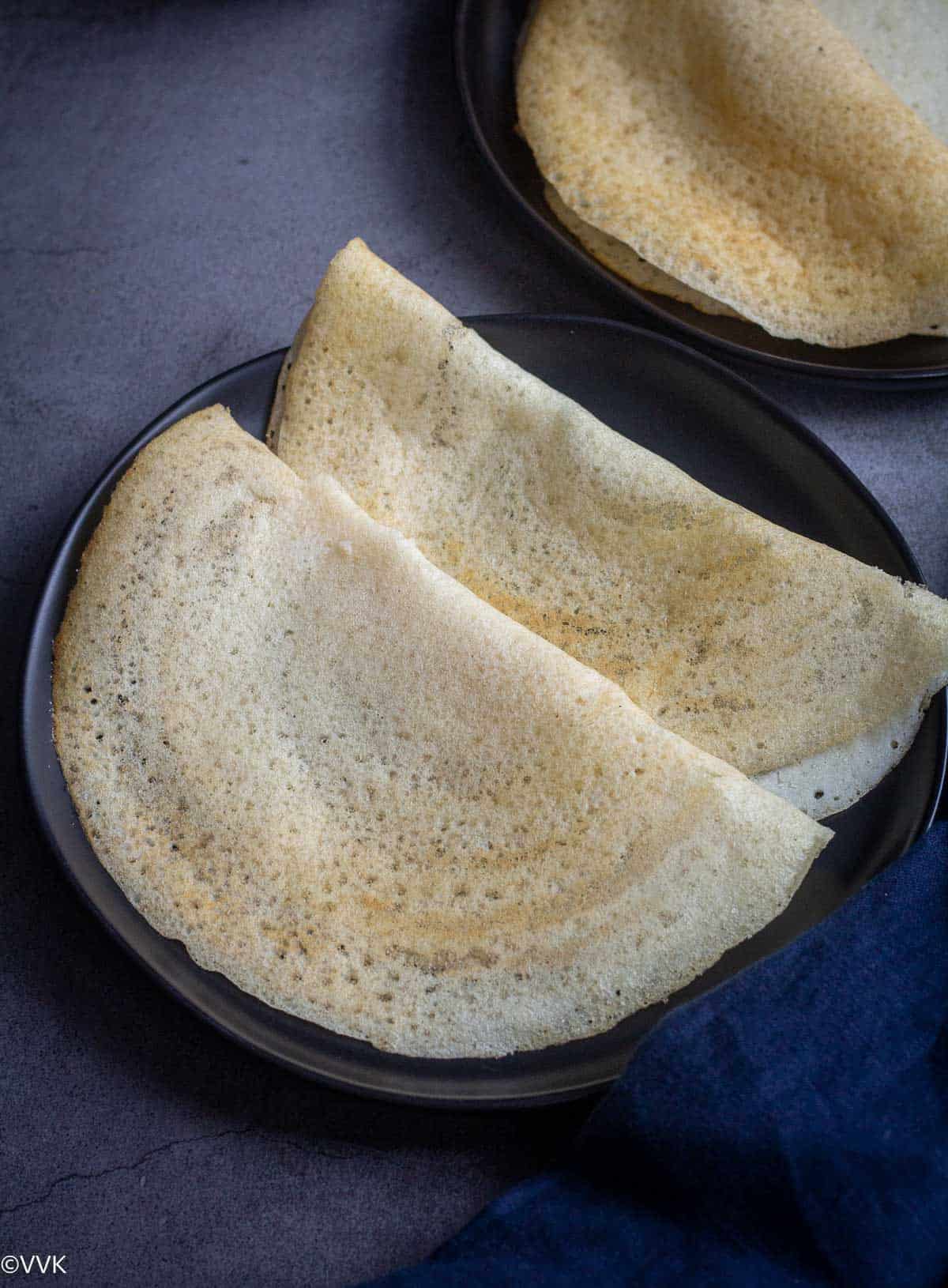
Recipe notes
- Adjust the salt to taste.
- Squeeze the water from the rice rava as much as you can. Towards the end, it will be difficult; press it with a spoon and discard the water.
- I have mentioned the water measure I used; please adjust as required. The amount might vary as per the rice quality.
- If using coarse idli rava, soak it for 4 to 5 hours and make sure to grind it into a smooth batter.
- If you are not following a vegan diet, you can use ghee to prepare the dosai.
Explore other dosa varieties
PS: If you try this idli rava dosa, please don’t forget to comment and rate this recipe. If you have any questions, please leave a comment, and I will get to it ASAP. Make sure to follow me on my Pinterest for more healthy and delicious ideas! Follow me on Instagram or join my Facebook Group for more recipe updates! You can also sign-up for my newsletter for weekly updates.
📖 Recipe
Idli Rava Dosa | Rice Rava Dosa
Equipment
- 1 Mixer jar or coffee grinder
- 1 Tawa or Griddle
Ingredients
Instructions
Soaking and preparing the batter
- Rinse the rice rava, urad dal, and poha. Soak the urad dal, poha, and fenugreek seeds together in one bowl and rice rava separately in another for 3 to 4 hours.
- After 4 hours, drain the water from the urad dal/poha mixture and grind it into a smooth batter. I used my Indian mixer jar to prepare the batter and used 6 tbsps of water while grinding the urad dal.
- Take a fistful of idli rava, squeeze the water as much as you can and add it to the urad dal mixture. Work in batches and add the squeezed rice rava to the mixer jar. Add the coconut yogurt.
- Grind them all together. I used about ½ cup of water during this process. Note – I used my tall jar, and I could grind in one go. Depending upon the size of your blender/mixer jar, work in batches.
- Transfer the batter to a bowl and add salt. Mix well and let it sit for 20 to 30 minutes.
Make the dosai
- Heat a well seasoned cast-iron pan, and when it is hot, reduce the heat to medium-low. Take a ladle full of batter, pour it on the pan, and spread it gently.
- For a crispy version, spread it evenly and thin. For a soft version, add the batter and let it spread. You can cover and cook like aval dosa.
- Spread some oil around the edges let the dosa cook. When the top side is fully cooked, loosen the edges, flip the dosa, and cook for 30 to 45 seconds. Now flip the dosa back and remove it from the pan. Similarly, make the dosa with the remaining batter and serve hot.
Notes
- Adjust the salt to taste.
- Squeeze the water from the rice rava as much as you can. Towards the end, it will be difficult; press it with a spoon and discard the water.
- I have mentioned the water measure I used; please adjust as required. The amount might vary as per the rice quality.
- If using coarse idli rava, soak it for 4 to 5 hours and make sure to grind it into a smooth batter.
- If you are not following a vegan diet, you can use ghee to prepare the dosai.
Nutrition
I am not a nutritionist. The nutritional information is provided as a courtesy and is an estimate only. It varies depending upon the product types or brands.


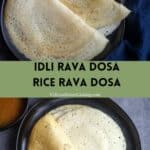
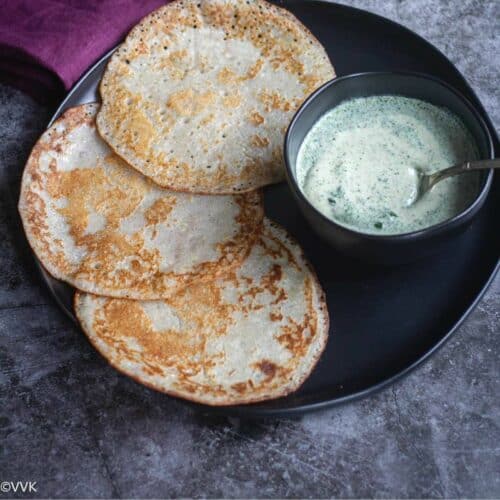
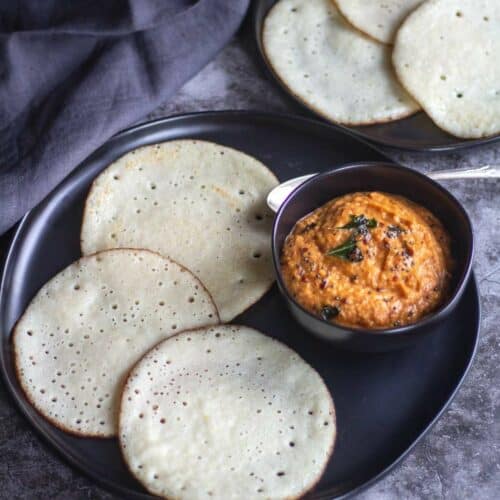

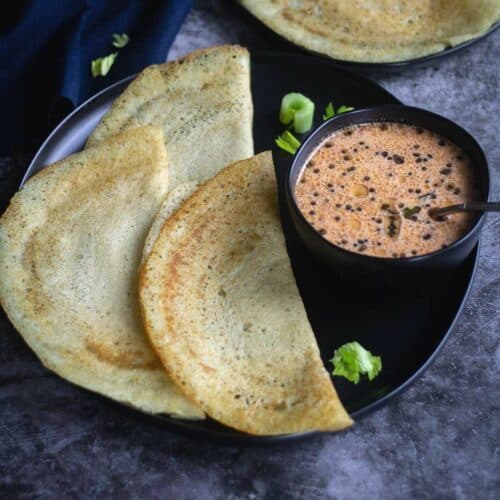
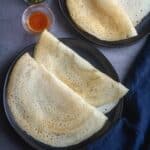

Hi
Thank you for sharing the recipe. Should the yoghurt be sour? If it’s not will it still work?
You can try it with sour yogurt too. The taste will be slightly different but you can definitely try.
Ihave tried dosa with rice ravva can we add ground rice as rice ravva is not easily available in stores
In that case, try fermenting it. I will test that too.
Thank you very much
What a fantastic idea… The dosa looks really spongy…
Thanks :-)
I used to make dosa with idli batter made with idli rava. There is a definite difference in texture and taste but I love dosas in both ways. I have never used coconut yogurt and it sounds interesting.
Thanks Harini.
Great idea to use idli rava and make this dosa. This being a no ferment dosa, I am already in love with it. I have a bag of it and going to try it right away. Amazing resicpe for the series Srividhya!
Thanks Radha.
I stopped getting idli rava after I switched to idli rice and use same batter for both dosa and idli. I am start getting it gain!! Since it is a no ferment dosa, i am going to try it. Dosa has come out crisp.
Thanks Usha.
Quite interesting recipe, Vindhyaji. Wish to prepare these DOS as soon. Pl post the video. Regards
Sure will do. Thanks.
Such an easy and perfect dosa with idli rava !! comes in handy on a no dosa batter day !!
Very true. Thanks Sharmi.
I am coming here for the first time. Lovely !! I make this too, sans the Poha. Shall try with poha. Yes, the vendhayam adds to the taste and is healthy too
Usha Surya
Welcome to my space. Thanks a lot. I hope you like it with poha too.
Never thought of making dosa with Idli rava. Super idea dear. Thank you for sharing
Thanks Anu :-)
Excellent Srividhya, we make Idli Rava Idli every week, and with the excess batter, I always keep thinking about different ways to use…making dosas is a great method!
Thanks Valli. I am using idli rava for everything else except idli. :-)